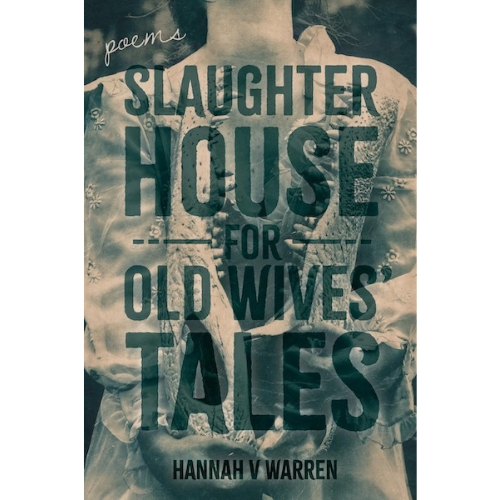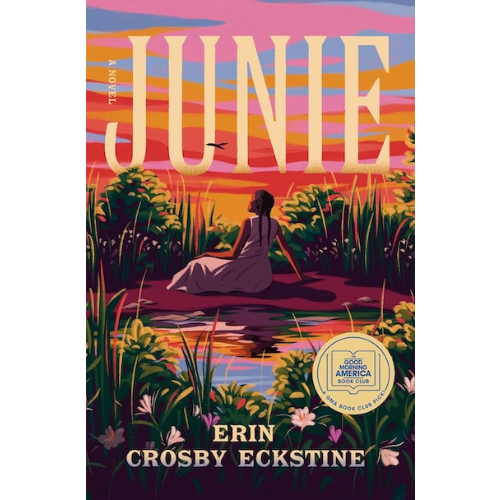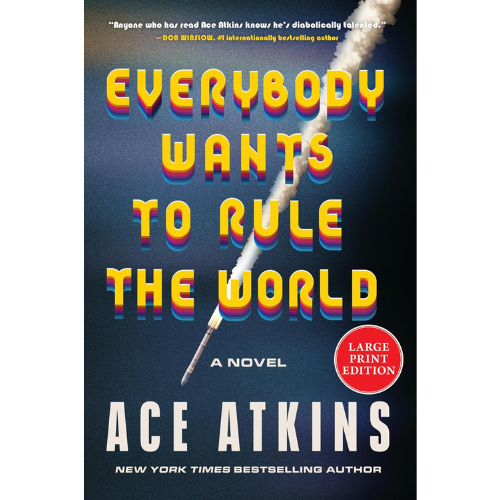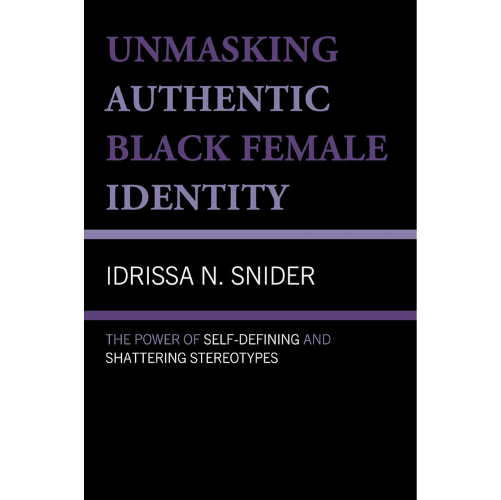By Burgin Mathews
The University of North Carolina Press: Chapel Hill; Nov. 2023
Hardcover, $99.00; Paperback, $29.95
Genre: Jazz, Alabama, Birmingham, History, and Criticism
Reviewed by Edward Journey
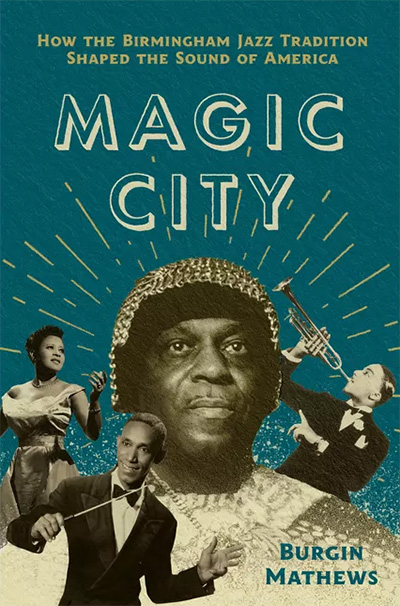
In 1993, the Birmingham theatre where I worked hosted a site visit from the National Endowment for the Arts. The NEA rep, visiting from Pennsylvania, attended a matinee and rehearsal and interviewed actors and staff. It was my responsibility to show him around the city. While in the Civil Rights District, I had the impulse that there was another site that the visitor needed to see. We headed toward Ensley and stopped at the historic marker in front of an abandoned building that marks the location of Tuxedo Junction, the streetcar junction that inspired the title of Erskine Hawkins and His Orchestra’s signature song.
I’m not sure the NEA site visitor fully understood the significance of that side trip, but Burgin Mathews, author of the new book, Magic City: How the Birmingham Jazz Tradition Shaped the Sound of America, would definitely approve. Mathews, a writer, radio host, and the founding director of the Southern Music Research Center, has written a definitive history of jazz and jazz musicians from the Birmingham area. It is one of the most enjoyable books I’ve read in a while.
Magic City begins with stories involving two of Birmingham’s most recognizable jazz icons – Erskine Hawkins and Sun Ra (born Herman “Sonny” Blount). These opening stories look at those two musicians in their later years. In 1985, Hawkins is back at Tuxedo Junction for a celebration in honor of his seventy-first birthday; in 1988, Sun Ra and his Arkestra are playing a gig at the Nick, “Birmingham’s Dirty Little Secret,” on the Southside. These two musicians were born in Birmingham in the same year – although Sun Ra always asserted that he was from Saturn and had merely “arrived” in Birmingham. Sun Ra also claimed that “as far as creating jazz is concerned, the center is Alabama, not New Orleans.” Hawkins and Sun Ra are two of the most prominent products of the city Mathews declares the “home to one of [jazz] music’s most essential unsung communities.”
Mathews makes an excellent case for his claim, presenting a tight-knit community of Black musicians who were generally known as “models of self-respect, sophistication, and style.” They made their mark in Birmingham and traveled far beyond the city, playing with Duke Ellington, Louis Armstrong, Billie Holliday, Count Basie, Ramsey Lewis, and other jazz luminaries. In the process, the reader encounters a well-researched and compelling history of the “Magic City” that spawned such talent.
John T. “Fess” Whatley is a pivotal figure throughout the book, teaching Hawkins, Sun Ra, and most of the other musicians who came out of Birmingham during the peak of its jazz era. Whatley studied music at Carrie Ann Tuggle’s Tuggle Institute and was hired as the printing instructor at Birmingham’s Industrial High School, which later became Parker High. Whatley taught printing at Industrial High while he aggressively “bootlegged” a band into the school’s curriculum. Whatley carried a .45, rode in a Cadillac with a “lady chauffeur,” and required his musicians to be able to read music. His “Jazz Demons” was Birmingham’s first jazz orchestra, playing for “elite social functions, Black and white alike” for decades. When Birmingham musicians in New York City mentioned that they had studied under Fess Whatley, it was assumed that they could read music. As Whatley always bragged, “no audition necessary.”
Magic City deals frankly with the troubling issues of Jim Crow, segregation, and the Civil Rights Movement in Birmingham. During his early years in Birmingham, Sun Ra faced harassment for his unique dress and unconventional style and served jail time for his pacifism during World War II; Hawkins’s musicians constantly gauged the racism and indignities encountered on tour. The paths of some musicians were waylaid by tragedy, “broken potential,” or the ingrained chauvinism of the jazz culture, but Mathews writes that “the Birmingham story is one more of adventure than adversity.”
This is due in part to the enclaves that provided haven for Black musicians. There are the Smithfield community and Tuxedo Junction, of course, but none stand out like the Fourth Avenue North district downtown, “the beating heart of everything.” Its clubs, barbecue stands, poolrooms, barber shops, restaurants, and theatres were “a Mecca for cooks and chauffeurs on Thursday night, a heaven for miners and mill workers on Saturday night” and a draw for “lanky cotton hands from the Black Belt.” Fourth Avenue provided an aspirational model of a thriving Black middle class. Mathews notes that “absent from the historical memory of the [civil rights] movement is the intersection of diverse racial – as well as sexual – identities in the spaces where music was made.” Local singer Nell Carter performed some of her first Birmingham gigs at gay clubs and on integrated stages. A “quiet brotherhood” of Black and white jazz artists got together to play after hours.
The Fourth Avenue neighborhood’s Masonic Temple Ballroom provided a venue for national acts. Mathews vividly evokes an image of a young Erskine Hawkins and other children who “would climb the walls from the street” to catch a glimpse of Cab Calloway, Duke Ellington, Earl Hines, Lucky Millinder, and other touring acts. Around the corner, at theatres like the Frolic or the Famous, audiences might enjoy Ma Rainey, Ethel Waters, or Bessie Smith; local musicians, destined for the “big time,” would make up the house band. One might also have heard Birmingham vocalist Ethel Harper. Harper went from Birmingham to New York’s Broadway, became part of a popular quartet, did a stint as a touring Aunt Jemima for Quaker Oats, and later, as an educator and activist, developed and taught the country’s first Black history curriculum.
There is an urge to keep recounting the colorful personalities, places, and anecdotes that fill the pages of Mathews’ book. He interviewed many of the musicians and others as primary sources and seamlessly transitions through the personalities and stylistic shifts from big band to bebop to modern jazz and more. Magic City is an indispensable source for jazz aficionados and anyone interested in Birmingham history.
Edward Journey, a retired educator and theatre professional living in Birmingham, regularly shares his essays in the online journal “Professional Southerner” (www.professionalsoutherner.com).

